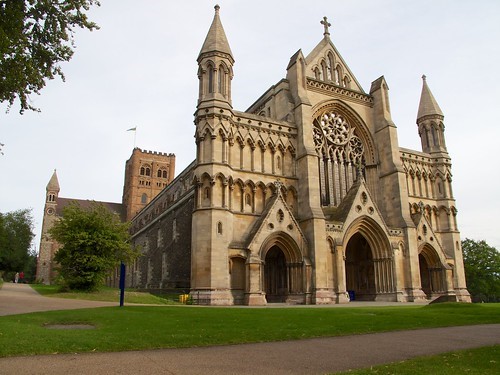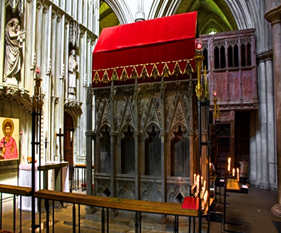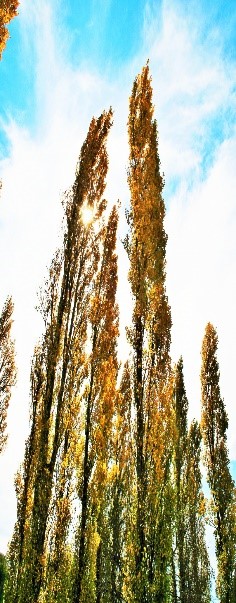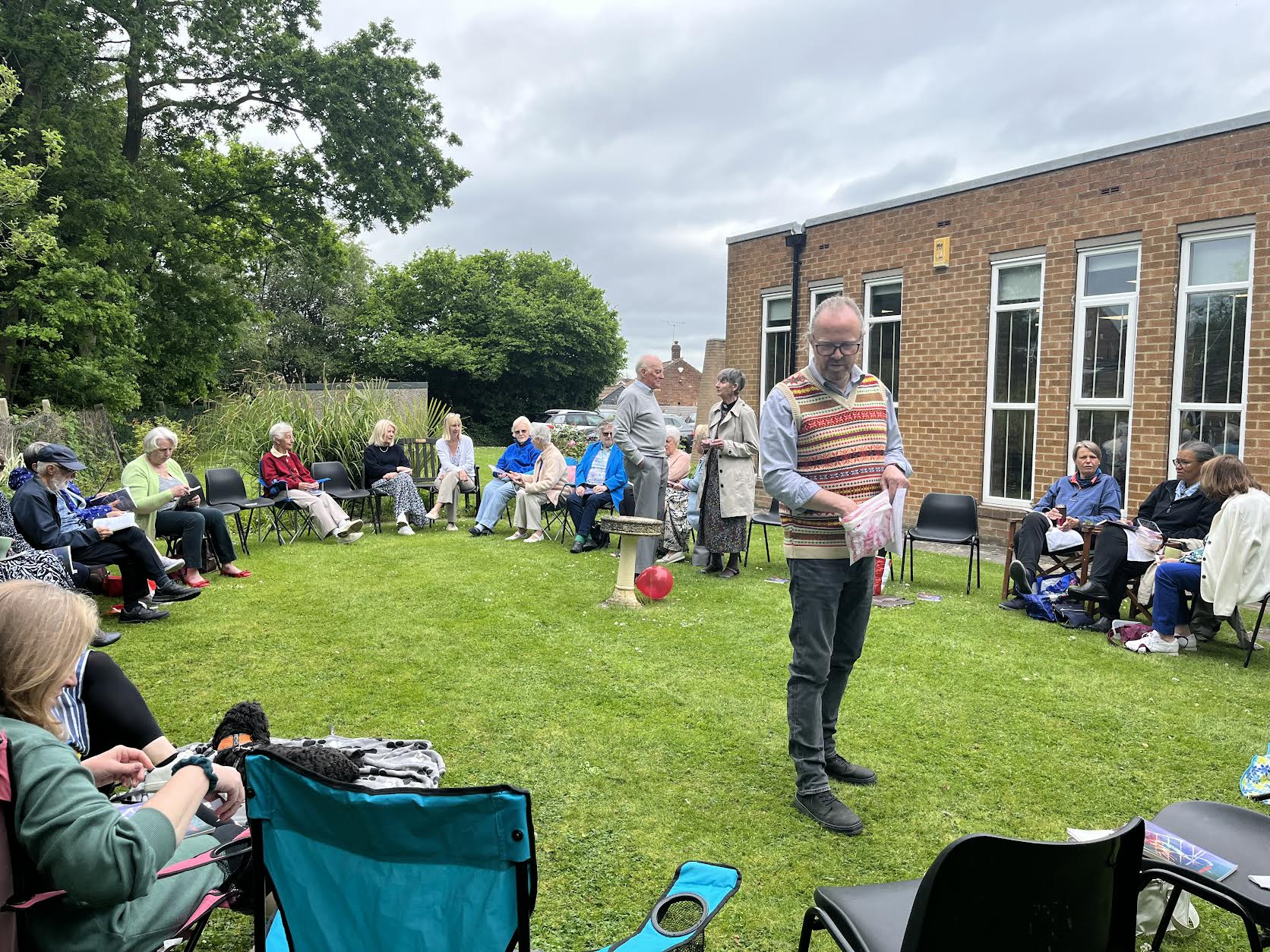The Prayer of St. Columba
Saints Day – 9th June
 Be a bright flame before me, O God
Be a bright flame before me, O God
a guiding star above me.
Be a smooth path below me,
a kindly shepherd behind me
today, tonight, and for ever.
Alone with none but you, my God
I journey on my way;
what need I fear when you are near,
O Lord of night and day?
More secure am I within your hand
than if a multitude did round me stand.
Amen.
Dear friends
Who is our neighbour?
Throughout his life, Jesus spent time with many different individuals and diverse communities. He also said many things, asked many things which resonated with these actions. In Mark’s Gospel, Jesus tells the crowds, and thus each one of us: “Love your neighbour as yourself.” The Greek word for ‘love’ used here is ‘agape’, which is the same word used for love in John 3:16 – ‘When God so loved the world.’ In his book, The Four Loves, C.S. Lewis defines agape as: ‘a selfless love that is passionately committed to the wellbeing of others.’
In the times we are living, it can feel like our world and our communities are becoming more and more divided. From the war in Ukraine to the rise in hate crime, from the disparity between rich and poor to the increase in loneliness, it can feel rather scary. And yet, what would it mean for each one of us to passionately commit our whole selves to the wellbeing of ourselves and one another?
When I was training for ministry, one of the things I valued the most was the variety of people, theologies and experiences of the people I trained alongside. We were a wonderful, gathered community, a diverse community and aspired to be a very inclusive community. Not only did we study together, we also worshipped together, prayed together, ate together and laughed together (a lot!)
In her first speech to Parliament in June 2015, the late MP Jo Cox highlighted: “We are far more united and have far more in common than that which divides us.”
Her message of seeking unity and encouraging people to come together in their communities is one that epitomises the agape love Jesus epitomised through his words and actions.
So, through this month of June, I invite us to take time together to reflect on and explore: what could agape love look like in our own and our neighbours’ lives?
Nicola
| CALENDAR | |||
| JUNE | |||
| 4th | SUNDAY | 10.45am | Morning Worship led by Rev Phil Chilvers We shall be joined by Headingley Methodist Church |
| 11th | SUNDAY | 10.45am | Morning Worship, including the Sacrament of Holy Communion, led by our Minister, Rev Nicola Robinson |
| 13th | Tuesday | 12.30pm | Guild Lunch |
| 18th | SUNDAY | Morning Worship cancelled owing to road closures for the Leeds 10k run | |
| 25th | SUNDAY | 9.30am | Morning Worship at Headingley Methodist Church |
| 28th | Wednesday | 9.30pm | Elders’ Meeting |
| JULY | |||
| 2nd | SUNDAY | 10.45am | Morning Worship led by Rev Phil Chilvers |
IN MEMORIAM. PHILIP McSHANE – ‘Phil’
4th August 1947 – 13th April 2023
Phil was born in Northampton on the 4th of August 1947. He attended St. Mary’s Primary School. Little sister, Kathy, was born four years later. After two years at Northampton Grammar School, Phil went to Douai Abbey in Berkshire as a boarder, leaving in the summer of 1964. After a Gap year working at Reed Paper Mill he went to Sussex University gaining a BSc in Biochemistry in 1969.
Phil spent two years in Glasgow attempting to teach before he went exploring India for six months. (He only failed two things in his life – Teaching Practice and his driving test, eventually passing this on his third attempt)
After his trip to India, he secured a Biochemist’s post at the John Radcliffe Hospital in Oxford, mainly doing research into Diabetes. Phil was good at keeping in touch with people he met and his first accommodation in Oxford was on a houseboat belonging to Ken and Alison, whom he had met in Glasgow, But he soon moved into a shared house before buying first a flat and then a house.
As a person, Phil was outgoing. Happy to reach out to others, especially practically. He would read stories to children including his niece and nephew and Alison’s children and he took children swimming, which was one of his great passions. Some of his other loves were cycling, walking, and Nature, especially Bird Watching. Phil’s sister, Kathy, remembers lying under a bush in the pouring rain as he pointed out a Great Crested Grebe. He was still at primary school then. And Phil was very rarely seen without a camera, binoculars and a raincoat.
Richard says: “Phil was a warm-hearted hospitable person with a talent for cooking”. He enjoyed his dinner parties. While in Oxford, he worked with many colleagues from abroad, attempting to keep in touch with as many as possible – often entertaining them and offering accommodation when required.
Phil met Joan through working at the John Radcliffe Hospital. They married on 21st May 1988 in Wheatley and then moved to Kidlington but kept in contact with Wheatley where Phil jointly ran a Youth Group.
Phil loved organising “Foreign Trips”. He planned a Safari holiday to Kenya; two trips to America where he met up with colleagues he knew from Oxford; Trinidad and Tobago; Japan; a trip to India including three short Safaris; Australia. And some closer to home including Malta, a River Cruise, Austria, Switzerland and exploring Scotland.
Before he met Joan, Phil walked the Pennine Way. He then walked the West Highland Way (camping); and the Southern Upland Way Youth Hostelling (as Joan had refused to camp after experiences with the midges at Glencoe)
Phil had a passion for Statistics. In the 90s he took an Open University Master’s degree in Statistics. In Summer 2006, he was made redundant in Oxford but in the October of that year he secured a post at Leeds University as a Statistician in the Paediatric Department. He eventually retired fully from the post in 2014.
As soon as he moved to Leeds, he joined the CHA walking Group and a Country Dance Group in Meanwood.
Phil and Joan came to this church Headingly St Columba in 2007, playing a big part in congregational life.
Phil will be remembered for all his work with various political groups. Political meetings include both the Labour Party and the Movement for Colonial Freedom as well as Vietnam demonstrations and the Aldermaston March. His great passion was the NHS and that “it should survive”. Belonging to “Keep Our NHS Public” in Oxford and “LEEDS HOSPITAL ALERT” in Leeds.
He will also be remembered for his lifelong interest in birds and he was a member of the RSPB for most of his life. Post retirement, he joined the Local National Trust, becoming Vice Chair and Publicity Officer. He also joined the Rothwell walking group continued walking with the CHA and swam twice a week.
Sadly, Phil was diagnosed with Parkinson’s Disease before he retired. As his Parkinson’s progressed this curtailed his physical activities. He served on the Parkinson’s committee.
COVID was disastrous for Phil in many ways. However, OPAL (Older People’s Action in the Locality) made contact, providing Phil with a phone buddy, Ruth, who became a close friend whom he saw regularly. OPAL also enabled Phil to go out with a Men’s group. Fish and Chip Lunch; 10 Pin Bowling to mention just two. He also enjoyed the OPAL Cafe and their spicy meals. Phil also went out with Carer’s Trust, Mid Yorkshire; some of his companions taking him to the places where he had previously walked. He enjoyed going to Golden Acre Park, Garden Centres and Museums. Phil never lost his love for the Open Air. Fortunately, he was still able to get into a car, though it was a struggle.
Food was another of his loves and he was well known at many “Eateries” where there was willing help with the wheelchair. Once COVID restrictions were lifted Phil was able to return to his exercise class.
He really appreciated and looked forward to all the help and encouragement he was given by Philomena, Amanda and Cheryl over the last 20 months.
Phil will be greatly missed by family and friends, but they are grateful for their rich experiences and abiding memories. Let us give thanks for Phil’s life.
From the Eulogy given by Nicola.

GUILD LUNCH
We shall be back to our normal lunches this month when we meet on Tuesday, 13th June at about 12.30pm for lunch at 1 o’clock. All are welcome – if you fancy a change, why not come along for a simple meal and a chance to chat with friends
ST ALBAN, HIS CATHEDRAL and CITY
There are ‘Saints Days’ on almost every day of the year; but they rarely feature in our own calendar. June is no different when three early saints are remembered – on the 11thSt Barnabas, 29th St Peter and St Paul and then our own St. Columba on the 9th June.
But 22nd June is the Saint’s Day of St Alban, our first British Christian martyr. And the city has a surprising local connection. The history of St Albans dates back to 20 BC , a small settlement of wooden houses but important to the local Celtic tribe. When the Romans invaded Britain in 43 AD, they took over the Celtic settlement, calling it Verulamium. In 61 AD Boudicca, queen of the Iceni during a rebellion against the Romans burned and destroyed Verulamium, but the town was soon rebuilt, the wooden buildings now stone. Temples were built and a theatre with seating for 6,000 people. Early in the 3rd century the earth ramparts were replaced with stone walls and the town prospered. Parts of the walls remain, the boundaries can be traced and the theatre visited.
Alban lived in the early third century in the Roman city of Verulamium, just down the hill from where the Cathedral stands today. One day he gave shelter to a stranger fleeing from persecution, this stranger was a Christian priest, now known as Amphibalus. Alban was inspired by how important faith was to the priest and he asked to be taught more about Christianity. He was converted and, although the Roman authorities soon caught up with Amphibalus, Alban’s new-found faith made him determined to save the priest and he exchanged clothes with Amphibalus. He was arrested, allowing the priest to escape.
I am called Alban and I worship and adore the true and living God
Alban refused to renounce his beliefs and the magistrate ordered that he should receive the punishment intended for the escaped priest. Upon this ruling, Alban was led out of Verulamium and up the hillside where he was beheaded. Alban is honoured as Britain’s first martyr, and his grave on this hillside quickly became a place of pilgrimage; churches were built and then a monastery.
 Early monastery buildings were replaced using bricks and tiles taken from Roman sites. The work was overseen by Paul de Caen, appointed Abbot by William I. They started construction with the Tower, which still remains standing; the whole project completed in 1115. The medieval Abbey was famous as a place of learning and the monks living there produced high-quality manuscripts. In 1213 St Albans Abbey hosted a meeting of churchmen and nobles whose discussions led to the writing of the Magna Carta.
Early monastery buildings were replaced using bricks and tiles taken from Roman sites. The work was overseen by Paul de Caen, appointed Abbot by William I. They started construction with the Tower, which still remains standing; the whole project completed in 1115. The medieval Abbey was famous as a place of learning and the monks living there produced high-quality manuscripts. In 1213 St Albans Abbey hosted a meeting of churchmen and nobles whose discussions led to the writing of the Magna Carta.
The Dissolution saw the destruction and looting of the Abbey and shrines of St Alban and St Amphibalus but in 1553 the local people bought the church for their own use. (It remains a parish church and cathedral). Over the centuries, the upkeep was beyond a relatively small town and by 1832 it was in disrepair. In 1875, the Bishopric of St Albans Act was passed and on 12 June 1877 Bishop of St Albans, was enthroned and by then major repairs were underway.
George Gilbert Scott (architect of The Albert Memorial, Wakefield Cathedral, St Pancras and the Infirmary at Leeds) was chief architect but Edmund Beckett, 1st Baron Grimthorpe, who donated much of the immense sum of £130,000 towards the cost was very influential and his efforts attracted much controversy—and still do!—Nikolaus Pevsner calling him a “pompous, righteous bully’’ and whereas Scott’s work had clearly been in sympathy with the existing building, Grimthorpe’s plans reflected the Victorian ideal. ‘’Grimthorpe, never more than an amateur architect, designed the new front himself (the dominant West Front)—attacked as dense, misproportioned and unsympathetic: “His impoverishment as a designer . . . [is] evident”; “this man, so practical and ingenious, was utterly devoid of taste . . . his great qualities were marred by arrogance . . . and a lack of historic sense”.
 But some wonderful gems remain. In particular, the Shrine of St Alban set in the heart of the cathedral; restored many times, it is protected by the oak ‘Watching Loft’—the only one surviving in England—constructed c1400 and where monastic officials would watch over pilgrims.
But some wonderful gems remain. In particular, the Shrine of St Alban set in the heart of the cathedral; restored many times, it is protected by the oak ‘Watching Loft’—the only one surviving in England—constructed c1400 and where monastic officials would watch over pilgrims.
There is also The Shrine of St Amphibalus, recently renovated and where one of the newly carved figures wears a mask in remembrance of the Covid pandemic.
And at 85 metres, the Cathedral has the longest nave in England the pillars of which are decorated with stunning medieval wall paintings. In 2015, empty niches in the nave screen were filled with more recent saints and martyrs, among them German Lutheran Dietrich Bonhoeffer and Roman Catholic Archbishop Oscar Romero. And the local connection? William Beckett, father of Lord Grimthorpe (lawyer turned untrained architect) purchased the estate, now known as ‘Beckett Park’ and gifted the land for the building of St. Chad’s Church, Far Headingley. The architects were his son, Edmund Beckett, 1st Baron Grimthorpe (of St. Alban’s fame) in partnership with WH Crossland .
 We hope you enjoyed the lunch we held on the weekend of the Coronation; it was good to be able to celebrate together and I am sure many of us were able to share memories of the last coronation as well as mull over the details of the previous day. We should just like to give a specially big ‘Thank you’ to Brenda, David and Richard for not only decorating the hall but also donating the splendid cake.
We hope you enjoyed the lunch we held on the weekend of the Coronation; it was good to be able to celebrate together and I am sure many of us were able to share memories of the last coronation as well as mull over the details of the previous day. We should just like to give a specially big ‘Thank you’ to Brenda, David and Richard for not only decorating the hall but also donating the splendid cake.

Beyond the lawn and behind the shed, and mussing up the sky,
The branches of the elder point at something way up high.
It’s summertime and all the earth is dressed in coloured hue
The elder, though in summer’s best is pale against the blue.
The holly, crouching at her feet, is darkly, darkly green
The chestnut, wearing deepest pink, where candles peep between.
The copper beech, already dark, the oak and sycamore
Look forward now to autumn, and have different hues in store.
And still the elder holds my gaze, pale green and fluffy white,
Still pointing up to heaven and to SOMETHING out of sight.
In fond memory of Doreen Sowden
 In May Stainbeck Church held a fund raising lunch for the Partnership in aid of Christian Aid Week . . .
In May Stainbeck Church held a fund raising lunch for the Partnership in aid of Christian Aid Week . . .
 . . . we celebrated the Coronation with a lunch for members and friends . . .
. . . we celebrated the Coronation with a lunch for members and friends . . .
 . . . and Wigton Moor held a Pentecost Picnic and Service
. . . and Wigton Moor held a Pentecost Picnic and Service


